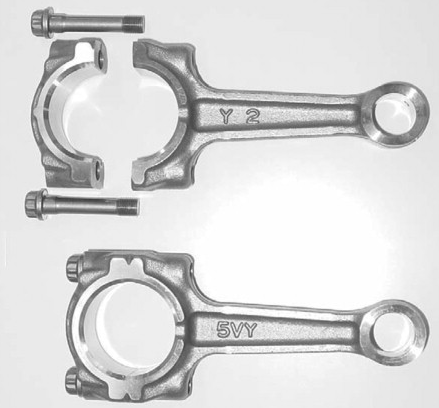The question “How to measure connecting rod length?” might seem straightforward, but it involves a fundamental understanding of engine components. The length of a connecting rod is measured from the center of the piston pin hole to the center of the crankpin hole. This measurement, also known as the center-to-center length, is crucial in determining the stroke ratio of an engine and the engine’s overall performance.
Understanding the Importance of Connecting Rod Length
A connecting rod is a vital component in various types of machinery, notably in internal combustion engines. It’s responsible for transferring motion from the piston to the crankshaft and plays an essential role in the conversion of reciprocating motion into rotational motion. The length of the connecting rod directly influences the stroke ratio, which in turn affects an engine’s performance characteristics, including power output, fuel efficiency, and engine speed.
Measuring the Length of a Connecting Rod
When measuring the length of a connecting rod, precision is key. The measurement is taken from the center of the piston pin hole (also known as the small end) to the center of the crankpin hole (the big end). This is often referred to as the center-to-center length. Various tools can be used for this purpose, including a rod measuring fixture, a machinist’s ruler, or a digital caliper.

The Impact of Connecting Rod Length on Engine Performance
The length of the connecting rod, in relation to the stroke of the crankshaft, determines the engine’s stroke ratio. This ratio significantly impacts the engine’s performance. A longer rod or a shorter stroke will result in a higher rod ratio, which can improve engine efficiency and reduce peak cylinder pressure. Conversely, a shorter rod or a longer stroke will result in a lower rod ratio, which can increase torque and power output at lower RPMs.
Regular Inspection and Maintenance
Regular inspection and maintenance of connecting rods are essential to ensure the longevity and performance of an engine. This includes regular measurement of the rod length to detect any signs of wear or deformation that could affect engine performance.
In conclusion, the process of measuring the length of a connecting rod is a crucial aspect of engine mechanics. The rod’s length significantly impacts the engine’s stroke ratio and, consequently, its performance characteristics. Therefore, regular inspection and precise measurement of the connecting rod length are paramount for maintaining optimal engine performance.
